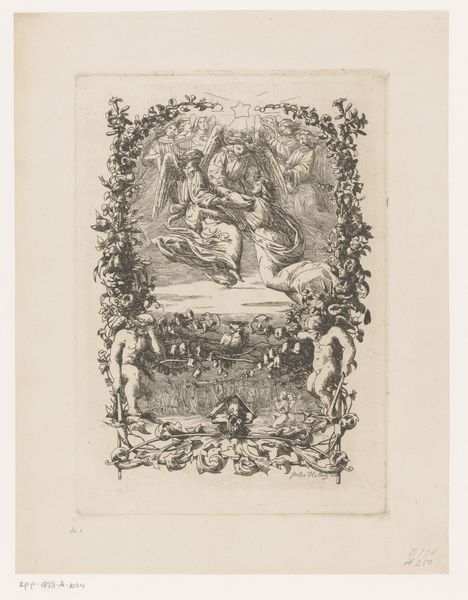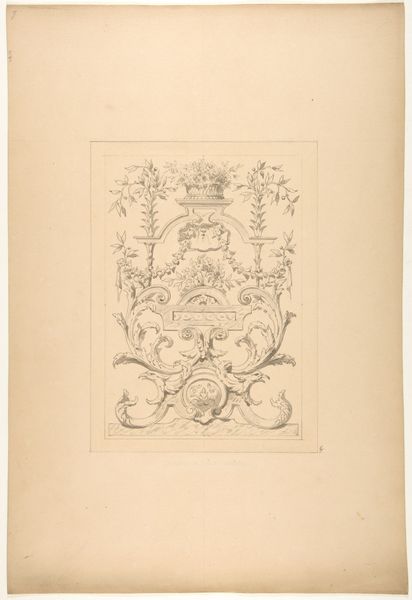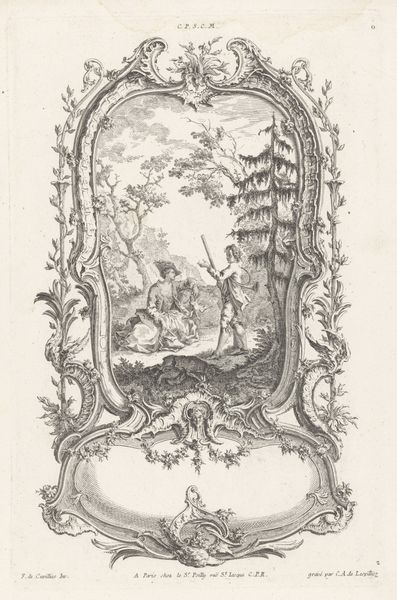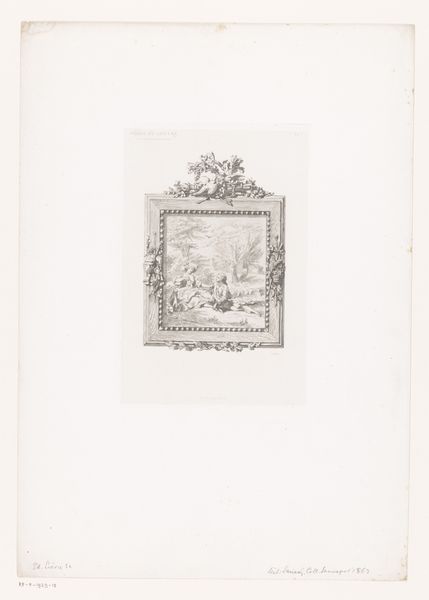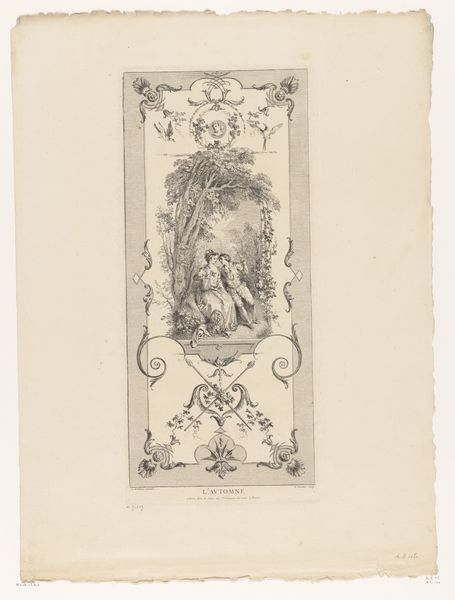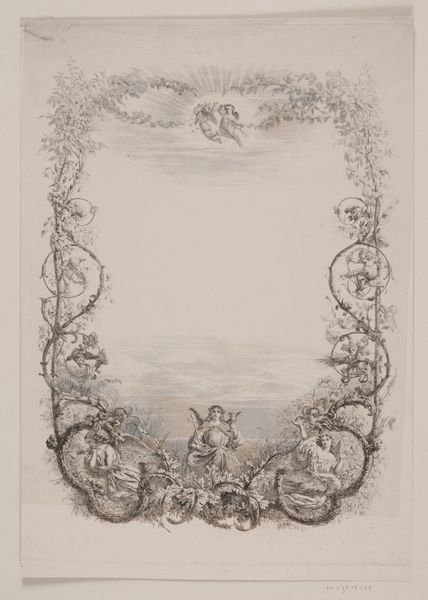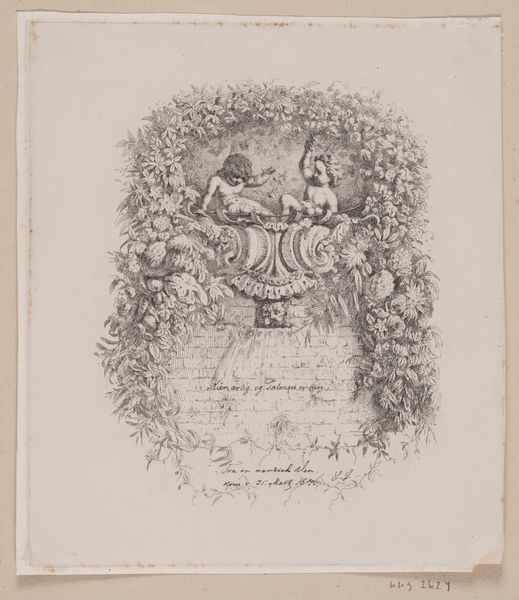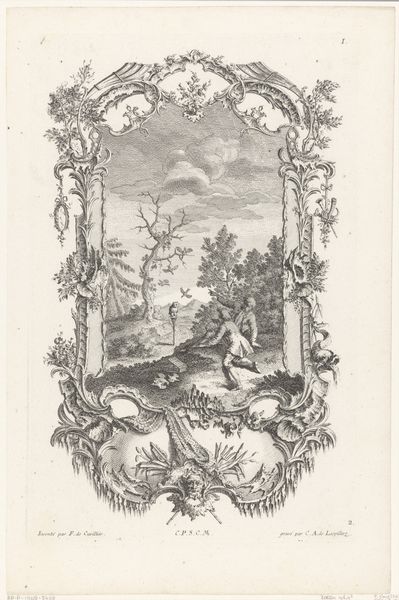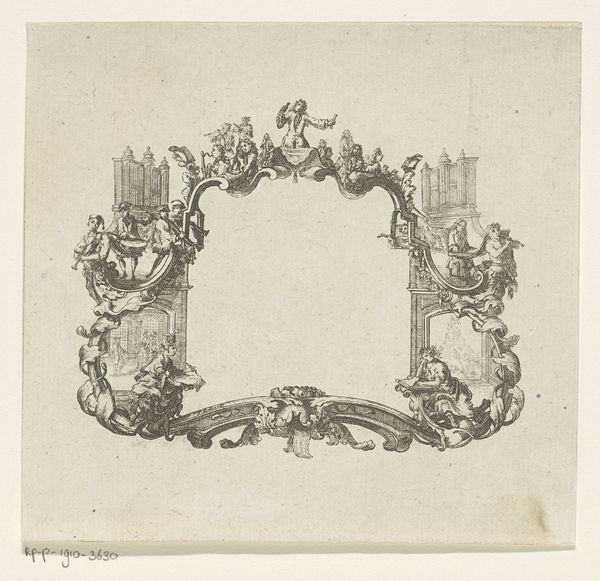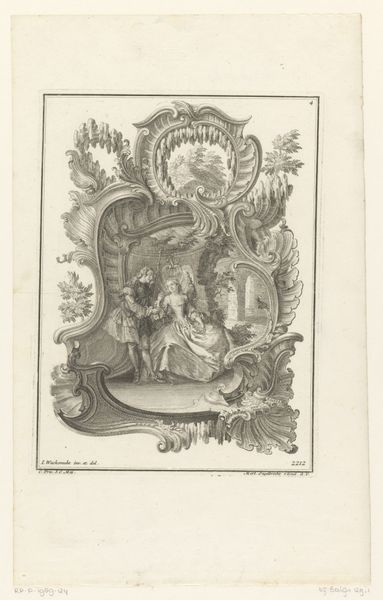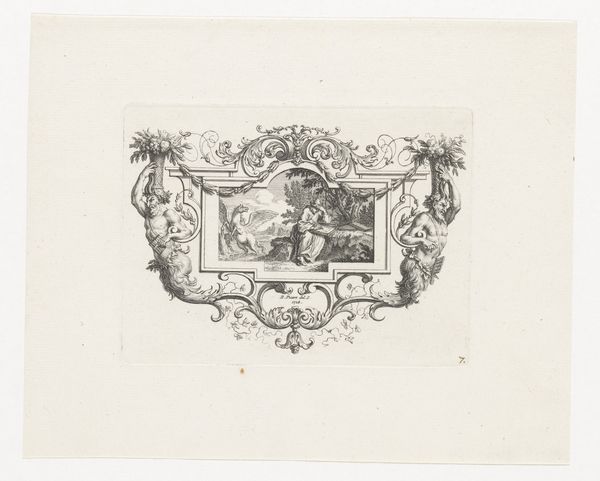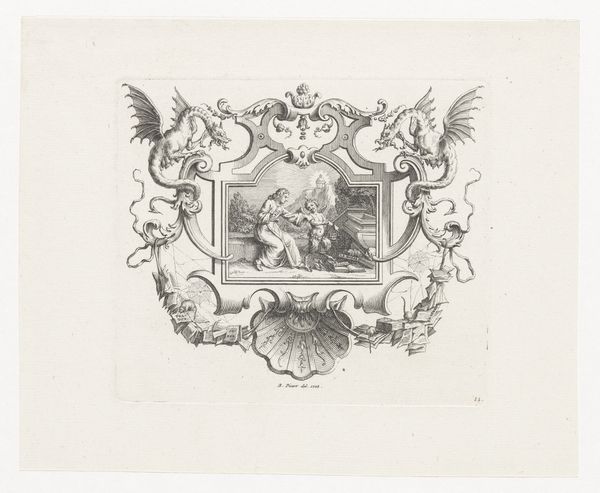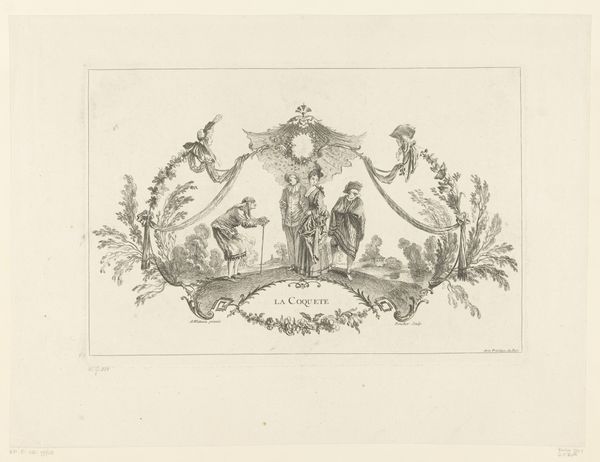
drawing, print, ink, engraving
#
drawing
#
ink drawing
#
allegory
# print
#
landscape
#
etching
#
figuration
#
ink
#
line
#
history-painting
#
engraving
Dimensions: 261 mm (height) x 197 mm (width) (plademaal)
Editor: This is Sophus Schack’s "Randtegning til Paludan-Müller: Sorgen" from 1852. It’s an ink drawing, almost like an etching with incredible detail. It feels quite theatrical and ornamental. What stands out to you about this piece? Curator: As a materialist, my eye is drawn to the laborious process of creating such a detailed image with ink and engraving techniques in 1852. Consider the social context: this was commissioned work, an illustration for Paludan-Müller, tied to literature. The "high art" of illustration was intricately linked to the publishing industry, dependent on skilled labor and the consumption of printed materials. The lines themselves – think of them not just as representing figures, but as physical marks made by a specific tool wielded by an artisan. Editor: That's a fascinating perspective. It hadn’t occurred to me to consider the socio-economic context. So, you're suggesting that even the act of creating the lines has meaning beyond the image they depict? Curator: Precisely! The time and skill invested, the cost of the materials, the very act of reproduction and distribution—all speak to the broader systems of production and consumption within which this image exists. Who had access to this image? What kind of work and experience made the image available to its public? What does that tell us? Editor: It definitely makes me see it differently. I was focused on the allegorical scene itself, but now I’m thinking about the hands that created it and how it was consumed. So, by focusing on the material production, you’re suggesting it breaks down some of those high art versus craft distinctions? Curator: Absolutely. It encourages us to recognize the inherent value in skilled labor, regardless of its perceived place in the art hierarchy. It bridges intellectual intent with material execution. Editor: This has completely shifted how I understand this seemingly simple drawing. Thanks, I now appreciate how production and consumption affect my reading of art. Curator: My pleasure! Seeing art through the lens of material production allows for deeper understanding and engagement with it.
Comments
No comments
Be the first to comment and join the conversation on the ultimate creative platform.
